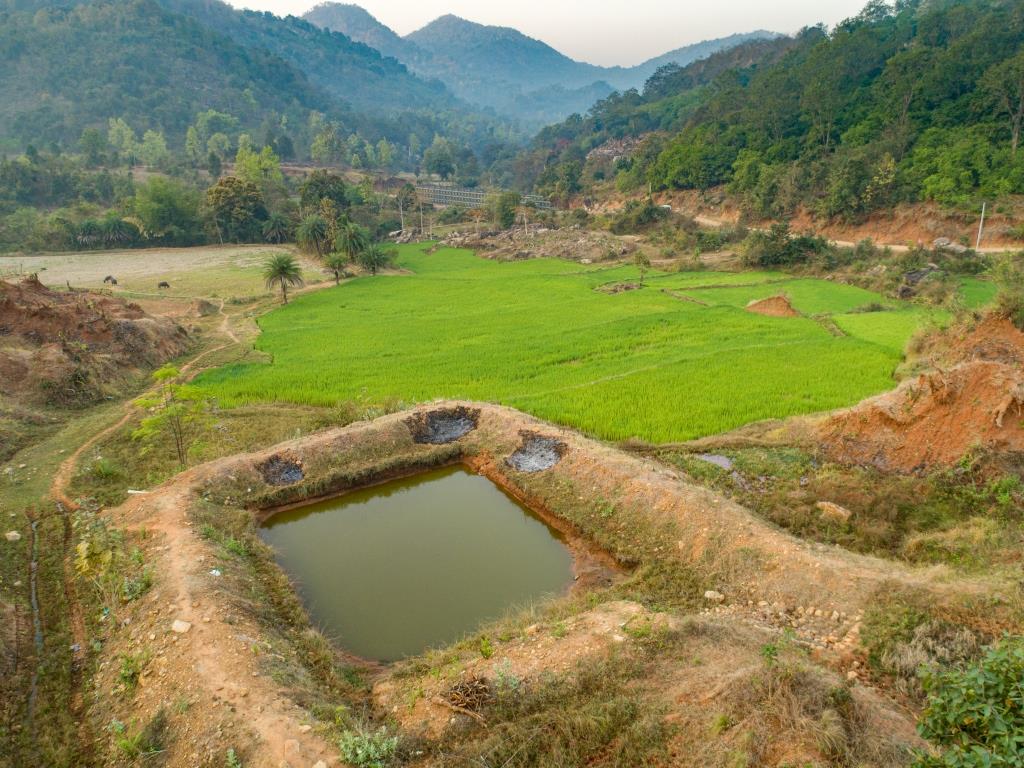by Anowyesha Dash
The diversity and distinctiveness of life on Earth have enthralled and confounded many for aeons. The uniqueness of each life form adds to the tremendous value and variability of biological resources, which begin right from the molecular or genetic level to the ecosystem level. This variety has been widely recognised to confer resilience and stability to biodiverse communities in a warming world. Therefore, as ecosystems reach a tipping point on account of climate change, enabling adaptation interventions rested on the resilience of biodiverse communities may be the best way forward.
EbA and Biodiversity
In response, ecosystem-based adaptation or EbA has emerged as a cost-effective, all-encompassing approach that harnesses biodiversity and ecosystem services to enable climate adaptation. EbA caters for the urgency caused due to the knock-on effects of climate change that gravely threaten the interactions and overall stability of nature and its diversity. In line with this, the Global Risks Report 2022 identifies “climate action failure”, “extreme weather events”, and “biodiversity loss” as the top three most severe risks over the next decade. At the same time, the Inter-Governmental Panel on Climate Change (IPCC) has on multiple occasions propounded biodiversity management as a course of action for both climate mitigation and adaptation. The two-way links that run between climate change and Biodiversity offer a good leverage point for EbA approaches to address the twin crises of climate change and biodiversity loss while accruing multiple pronounced benefits that support the natural flow of ecosystems. EbA shifts the focus from the “importance” and “need” to protect Biodiversity to it occupying the central “role” in a changing climate. In other words, the approach taps into the biological variability in an attempt to capture a “coherent conservation adaptation” agenda.

Having said that, the orientation and integration of biodiversity considerations in EbA is significantly distinct and, in fact, at variance with that seen in conservation planning activities, which have been misnamed as climate adaptation on multiple occasions. Biodiversity and ecosystem aspects in EbA are predicated on a changing climate. In contrast, conservation efforts are only beginning to address climate change. In essence, trussed by the values of diversity, EbA brings mutually supportive strategies under one roof to build a robust scientific framework to climate-proof the future.
Benefits of embedding Biodiversity in EbA
While literature about the role of Biodiversity in adaptation initiatives is insufficient, the success achieved by embedding Biodiversity in EbA is felt at multiple levels. This is mainly by virtue of its comprehensiveness, proactiveness, and climate resilience, which influences landscape-level factors and has significant socio-economic implications. Moreover, the broad base and variety, from the soil microbes to the higher-order organisms across multiple levels, i.e., genetic, species and ecosystem, present a significant vantage point to tackle climatic issues and offer livelihood benefits. For instance, the plethora of ecosystem goods and services obtained through better integration of Biodiversity in EbA can be bundled and strengthened by sustainable financing to enhance rural income.
Positive socio-economic conditions, in turn, are known to influence the adaptive capacity of species, ecosystems and the human community. This is especially pertinent for the vulnerable and developing geographies of the world, which remain rich in terms of natural capital yet disadvantaged on multiple fronts. For instance, Sub-Saharan Africa, one of the most species-rich regions in the world, is also one of the poorest and runs a risk of losing close to 10% of its real GDP to the collapse of ecosystem services. This elucidates a causal nexus between socio-economic conditions and adaptive capacities, effected by the far-reaching role of Biodiversity. Based on these sophisticated linkages, reasonable correlations can be made about the ability of Biodiversity to both leverage and reinforce the natural capacity of ecosystems to support human adaptation and planetary well-being.
An enabling environment
However, this needs to be supported by enabling policies for diverse ecosystems, such as grasslands, coastal ecosystems, and suchlike. For example, EbA approaches founded on biodiversity restoration for agricultural landscapes have substantial cross-cutting benefits. This needs to be importantly considered since agriculture, the primary source of employment in developing geographies, anticipates a precarious future due to climate variabilities.
Several examples emphasise the active role of Biodiversity in EbA. As a matter of fact, many of the wins of EbA are derived from biodiversity functions and how approaches are structured to bring ecosystems to the centre stage. For instance, emphasising the restoration of mangrove ecosystems in the Mekong Delta provided multiple benefits for the communities around the region. These include critical flood protection benefits, carbon sequestration, livelihood security, and resilience-building. Similarly, diversifying land use systems by agroforestry practices, intercropping practices, and more can generate a range of diversified environmental assets and ecosystem services to build adaptive capacity. This is in stark contrast to monoculture systems, which are known to increase vulnerabilities to climate change. In other words, Biodiversity, when protected through management, conservation and restoration, becomes the greatest ally to EbA that delivers numerous benefits to people and nature simultaneously.

Conversely, implementing solutions with low biodiversity value runs a risk of maladaptation in a changing world. Essentially, the critical role of Biodiversity needs to be in the vanguard of adaptation strategies. This would harness biological resources’ inherent capacity and resilience to address the intensifying climate risks.
WOTR’s efforts with EbA
WOTR has been at the forefront of such efforts, as it seeks to realise, avail and promote the immense multifaceted benefits associated with EbA approaches. We employ strategic solutions centred on thriving Biodiversity and ecosystem services to aggregate the otherwise piecemeal efforts to restore, rehabilitate and sustainably manage ecosystems. Our people-centric EbA interventions are founded on extensive research and innovation and support the transition of diverse ecosystems to expand livelihood opportunities, improve community well-being, and build local adaptive capacity and resilience, achieving biodiversity conservation, restoration, and adaptation.
Also Read: i) Soil biodiversity – The life underground that enables agriculture
ii) Making Biodiversity Conservation a Community’s Responsibility





